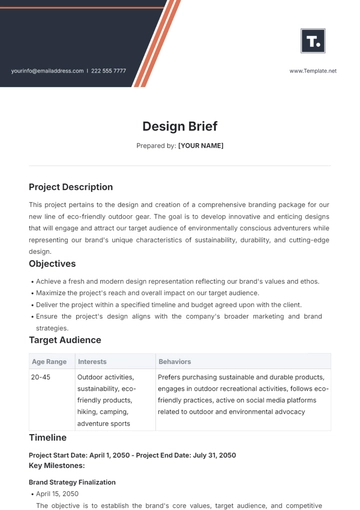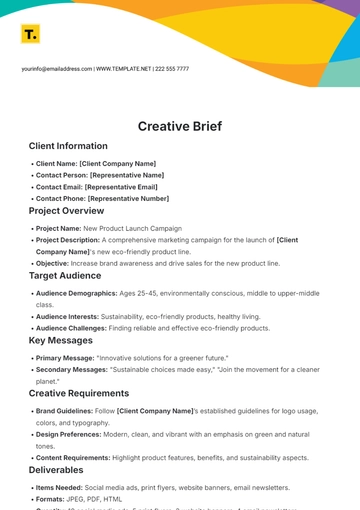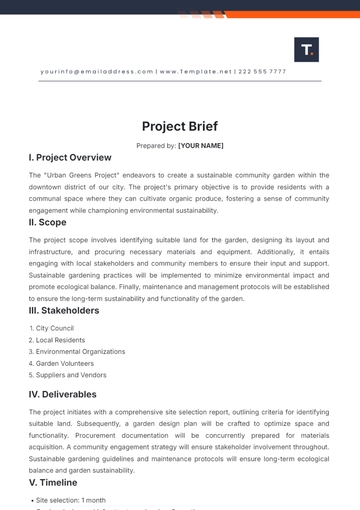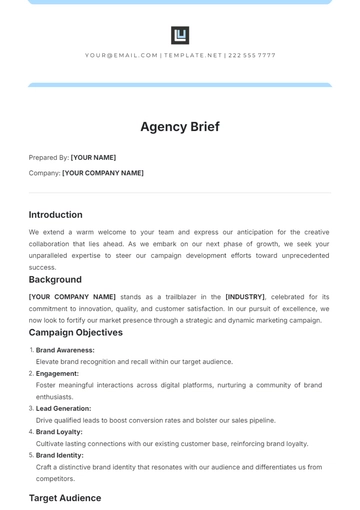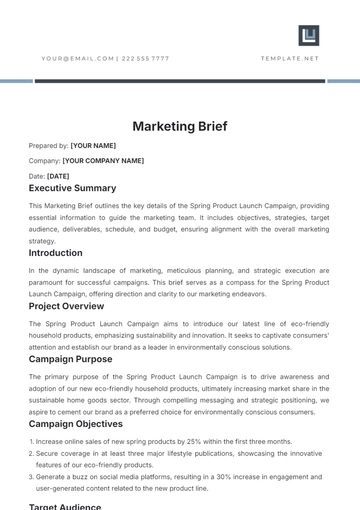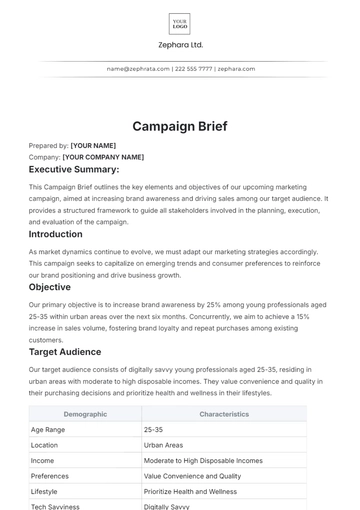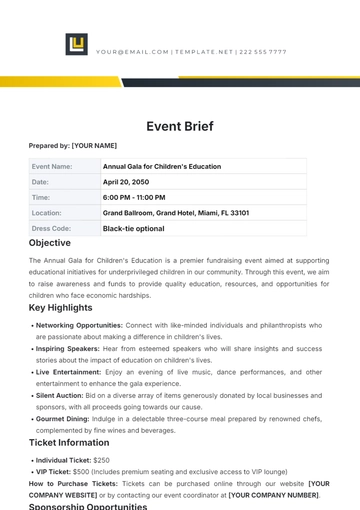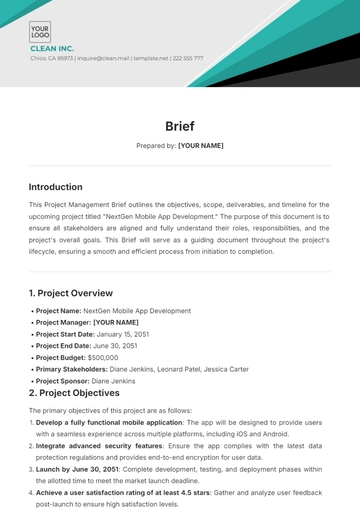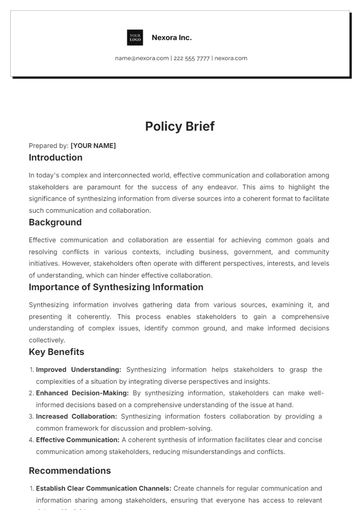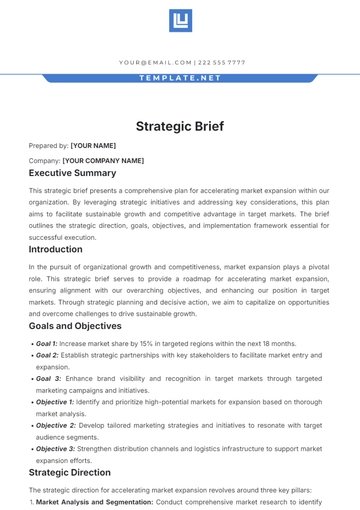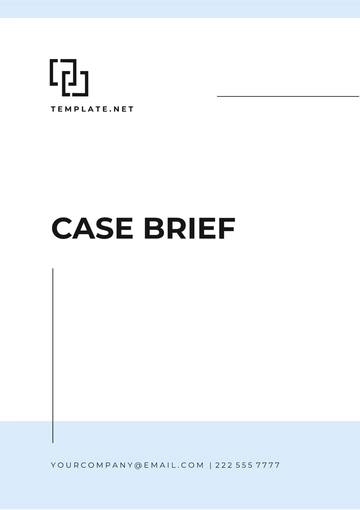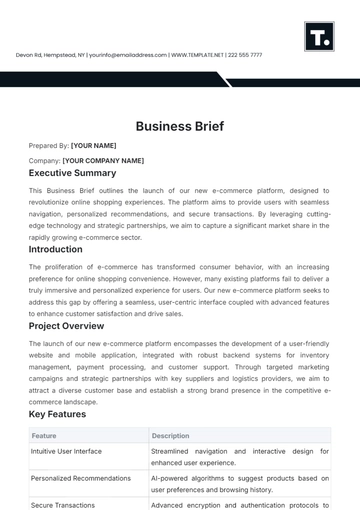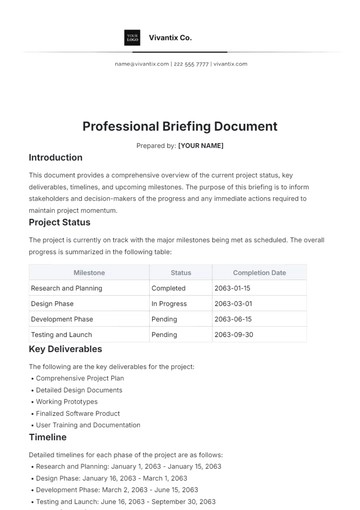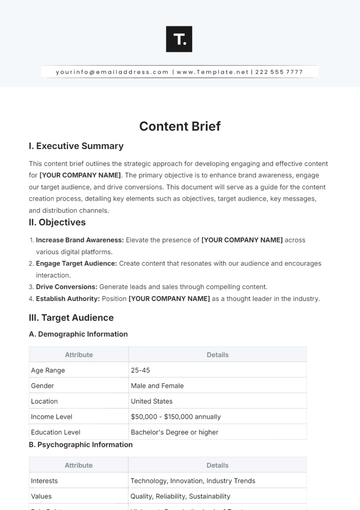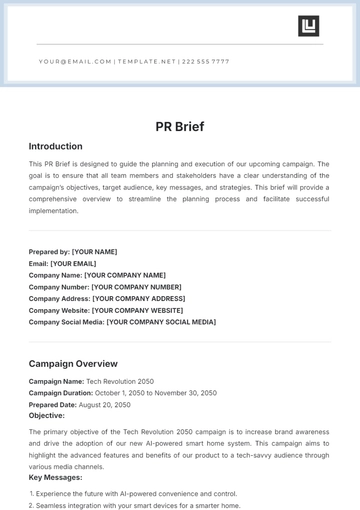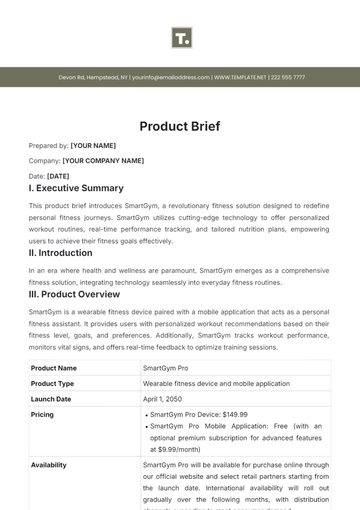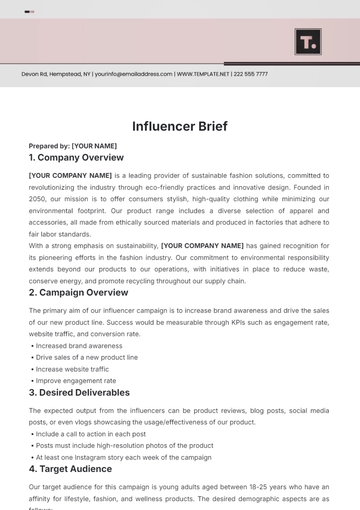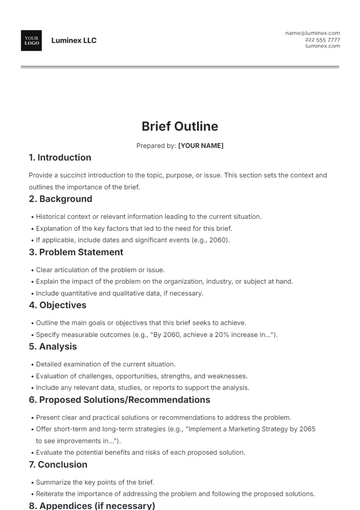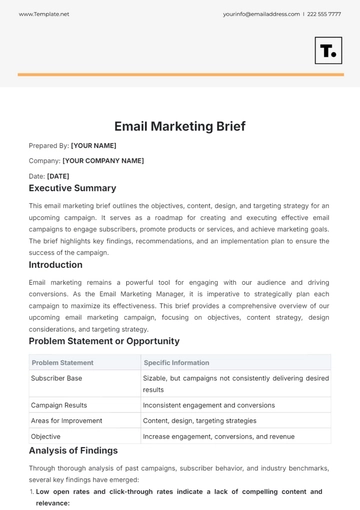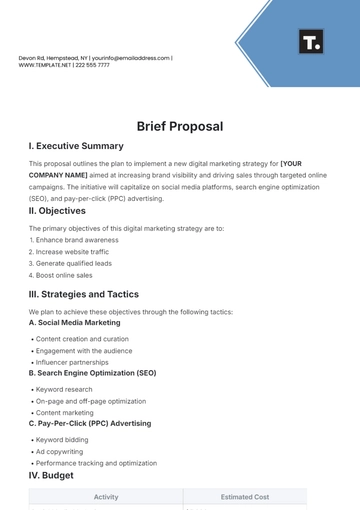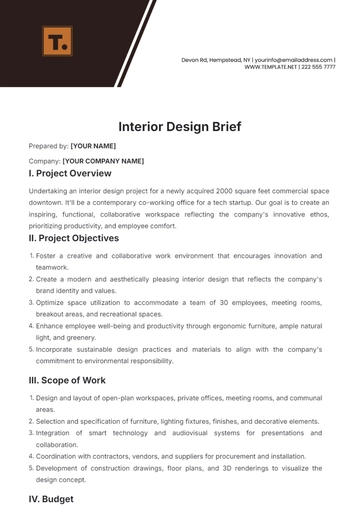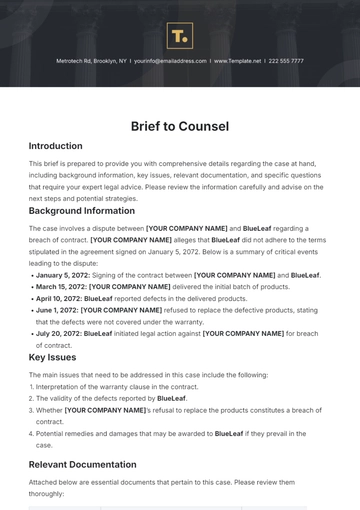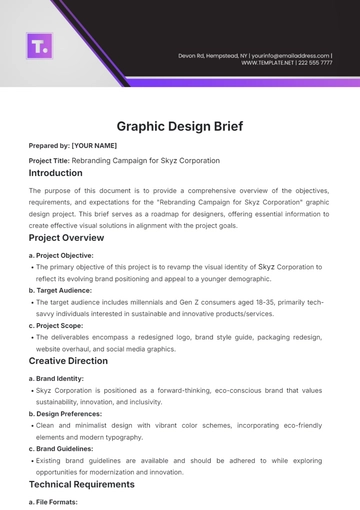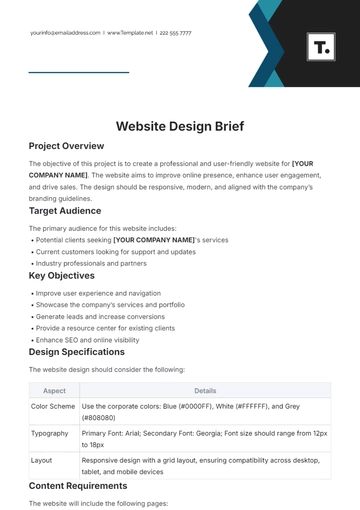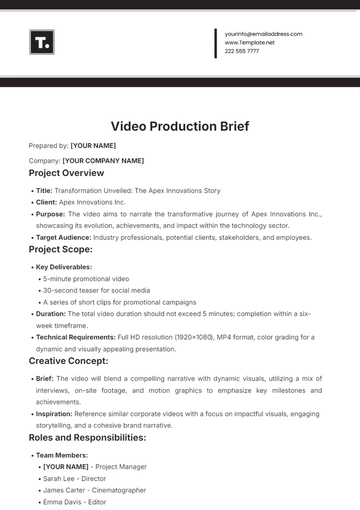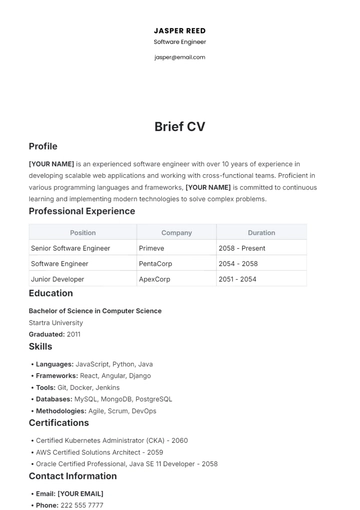Free Functional Brief
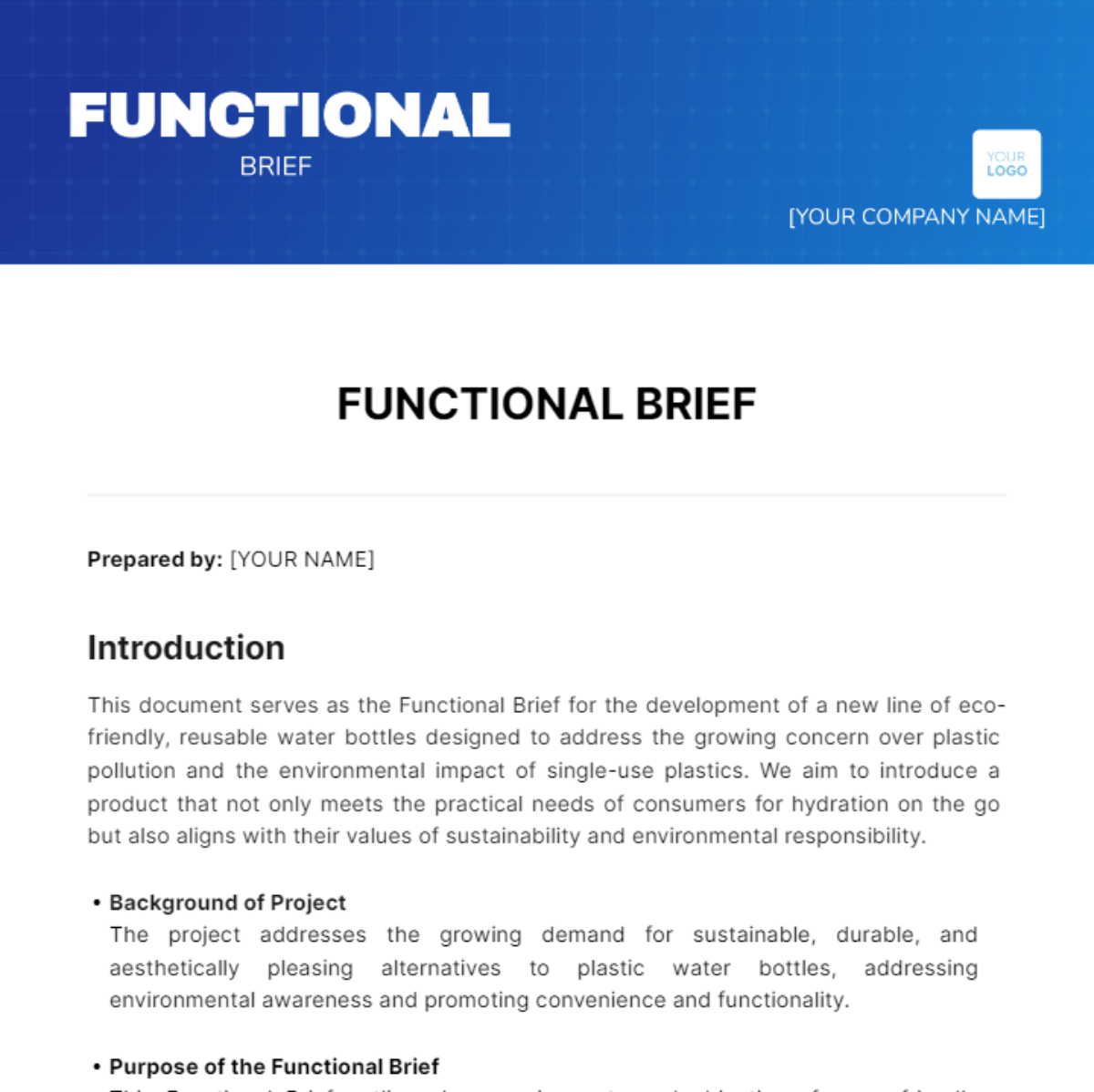
Prepared by: [YOUR NAME]
Introduction
This document serves as the Functional Brief for the development of a new line of eco-friendly, reusable water bottles designed to address the growing concern over plastic pollution and the environmental impact of single-use plastics. We aim to introduce a product that not only meets the practical needs of consumers for hydration on the go but also aligns with their values of sustainability and environmental responsibility.
Background of Project
The project addresses the growing demand for sustainable, durable, and aesthetically pleasing alternatives to plastic water bottles, addressing environmental awareness and promoting convenience and functionality.
Purpose of the Functional Brief
This Functional Brief outlines key requirements and objectives for eco-friendly water bottle line development, guiding stakeholders, and laying the foundation for design, production, and marketing strategies, ensuring sustainability, quality, and user satisfaction.
Key Stakeholders
Product Design Team: Responsible for the aesthetic and functional design of the water bottles, ensuring they meet the specified requirements for sustainability, usability, and appeal.
Manufacturing Partners: Selected based on their ability to produce high-quality, eco-friendly products and their commitment to sustainable practices.
Marketing Team: Tasked with positioning the product in the market, highlighting its eco-friendly features, and targeting environmentally conscious consumers.
Supply Chain Management: Ensures the sourcing of sustainable materials and oversees the logistics of production and distribution in an eco-friendly manner.
End Users (Consumers): The target demographic of environmentally conscious individuals seeking practical solutions to reduce their environmental impact.
Overall Objectives
The brand aims to introduce eco-friendly, stylish water bottles, reduce single-use plastic usage, and establish itself as a leader in sustainable consumer products. The product lifecycle is designed to align with sustainability principles.Method of Delivery
Design Phase: Collaboration with eco-designers to create a range of bottles that are durable, functional, and made from sustainable materials such as stainless steel, glass, or biodegradable plastics.
Prototype Testing: Conducting rigorous testing for durability, usability, and environmental impact to refine the product before mass production.
Sustainable Production: Partnering with manufacturers who use renewable energy and sustainable practices to minimize the environmental footprint of production.
Marketing and Distribution: The marketing strategy focuses on promoting the product's eco-friendly features through social media and eco-conscious influencers, with a focus on online sales to decrease carbon emissions.
Product Requirements
This table encapsulates the core aspects of launching a line of eco-friendly water bottles, highlighting the balance between sustainability goals and practical constraints.
Category | Requirements | Constraints |
Technical | - Use of sustainable materials (stainless steel, glass, biodegradable plastics). - Design for durability and long-term use. | - Availability of eco-friendly materials at a competitive price. - Ensuring product durability while using sustainable materials. |
Operational | - Efficient production processes that minimize waste. - Packaging must be recyclable or reusable. - Distribution channels that reduce carbon footprint. | - Finding manufacturing partners with sustainable practices. - Balancing eco-friendly packaging with protection during shipping. |
Financial | - Product pricing must be competitive yet reflect eco-friendly quality. - Investment in sustainable production and materials. - Marketing budget for education and awareness. | - Higher upfront costs for sustainable materials and production methods. - Market acceptance of potentially higher price points for eco-friendly options. |
Scope of Work
Work Breakdown Structure
Project Planning and Management
Task 1.1: Project kickoff meeting
Task 1.2: Finalization of project plan and timeline
Task 1.3: Establishment of project team and roles
Product Design and Development
Task 2.1: Research and development on sustainable materials
Task 2.2: Prototype design and testing
Task 2.3: Final product design approval
Supply Chain and Production Setup
Task 3.1: Identification and vetting of suppliers for sustainable materials
Task 3.2: Setup of production line with sustainable practices
Task 3.3: First production run and quality assurance
Detailed Schedule
Q1 2050: Project Planning and Management; initial Product Design and Development
Q2 2050: Completion of Product Design; start of Supply Chain and Production Setup
Q3 2024: Finalize Supply Chain setup; initiate Marketing and Sales Preparation
Q4 2024: Complete Marketing preparations; execute Launch and Post-Launch Activities
Milestones
Milestone 1: Final product design approval (End of Q1 2050)
Milestone 2: Completion of first production run (Mid Q3 2050)
Milestone 3: Collection and analysis of initial market feedback (End of Q4 2050)
Risks and Mitigation Strategies
Risk: Delays in sourcing sustainable materials.
Mitigation: Establish relationships with multiple suppliers to ensure material availability.
Risk: Higher production costs impacting product pricing.
Mitigation: Optimize production processes and explore bulk purchasing for cost savings.
Change Management Strategy
Regular Project Reviews: Schedule bi-weekly project team meetings to review progress, identify issues early, and adjust plans as needed.
Stakeholder Engagement: Keep all stakeholders informed about project progress, decisions, and changes through monthly updates.
Evaluation Criteria
These evaluation criteria are designed to ensure that the project delivers a high-quality, sustainable product within the allocated time and budget.
Performance Area | KPIs | Success Measures |
Quality | - Product durability | - Less than 2% return rate due to manufacturing defects<br>- Positive feedback on durability from 95% of customers |
- Environmental impact | - Achieve a 75% reduction in carbon footprint compared to conventional plastic bottles | |
Time | - Project completion time | - Completion of the project within the set timeline of 12 months |
- Time to market | - Launch product within 4 weeks of the final production run | |
Cost | - Production cost per unit | - Achieve or beat the budgeted cost of $X per unit |
- Return on investment (ROI) | - Achieve an ROI of X% within the first year post-launch |
- 100% Customizable, free editor
- Access 1 Million+ Templates, photo’s & graphics
- Download or share as a template
- Click and replace photos, graphics, text, backgrounds
- Resize, crop, AI write & more
- Access advanced editor
Elevate your project planning using Template.net's Functional Brief Template. Fully customizable and editable via our AI Editor Tool, it offers a structured methodology for outlining project specifications. Ideal for project managers and teams, it promotes goal clarity and alignment, ensuring streamlined project execution. This essential template is your key to efficient project management and successful outcomes.
